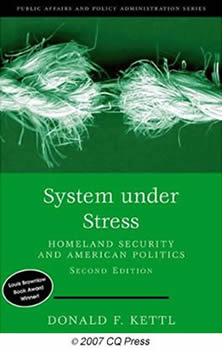System Under Stress - Chapters 1 and 2
Kettl uses the analogy of a medically administered cardiac stress test which is employed to evaluate the condition of a patient’s heart to help explain how the terrible events of September 11, 2001 and Hurricane Katrina can be used to diagnose what has worked well in American government, policy, and politics and what has not. In the case of these two horrific events, the tests revealed significant shortcomings in U.S. homeland security and emergency management policies and procedures. Unfortunately, Hurricane Katrina revealed that all of the legal and institutional changes implemented after 9/11 failed to prevent the utterly deplorable response by the entire homeland security and emergency management community.
In Chapter 2, Kettl’s analysis focuses on the central themes of communication and coordination which should be the core capability among all elements of the myriad U.S. homeland security and emergency management agencies. His analysis supports most of the recommendations concerning communication and coordination as outlined in the 9/11 Commission Report. As you work your way through this course ask yourself what did work well during these tragic events, and what did not. Try to identify in your mind what has changed temporarily and what has most likely changed forever in American society, politics, and policy, as a result of these events. Finally, will the changes in our American homeland security and emergency management systems allow us to better prepare for, mitigate, respond to, and recover from any future events.